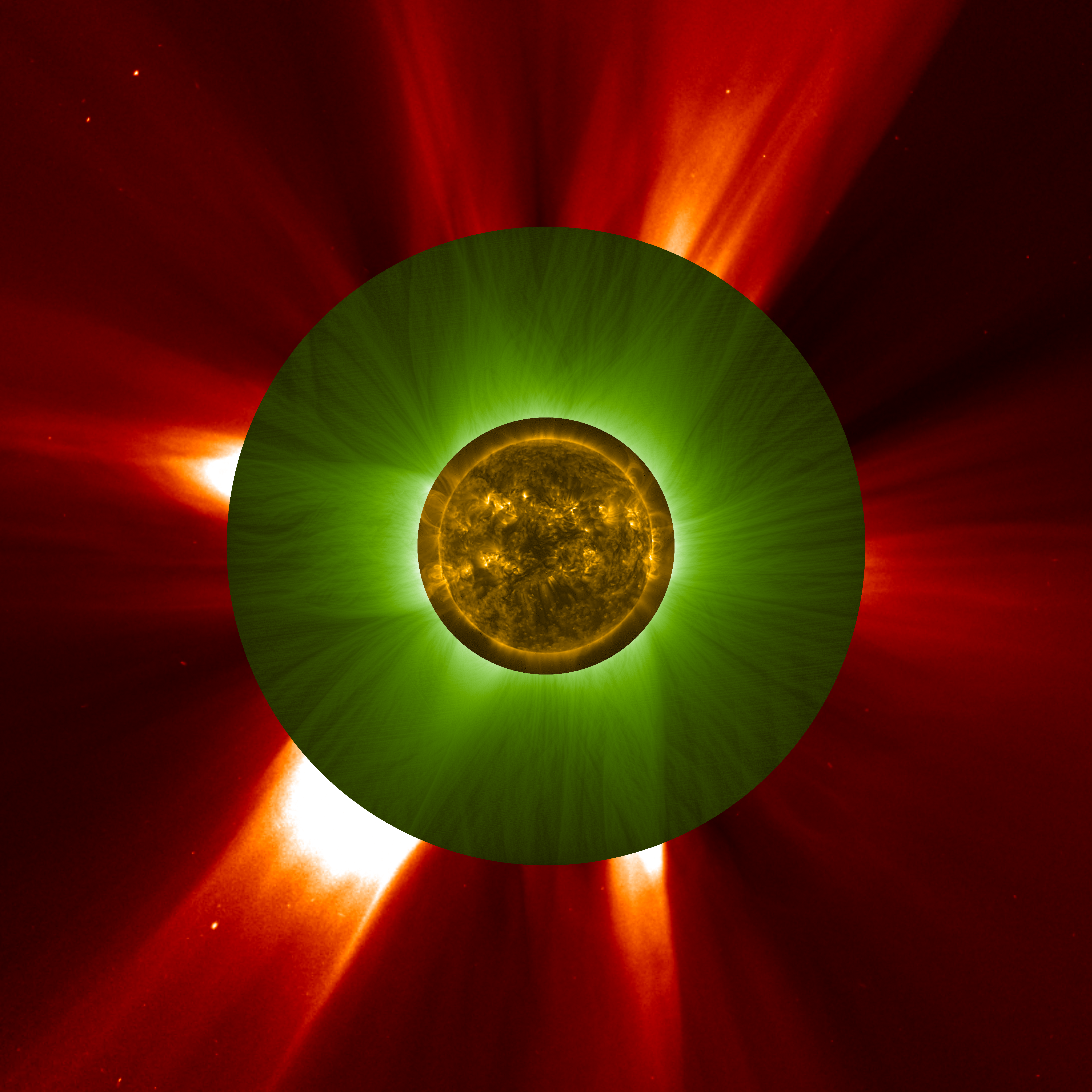Total solar eclipses are not just incredible celestial events. They are also important scientific moments that allow scientists to study the solar corona, the incredibly hot atmosphere of the Sun, probing its behavior. But solar eclipses do not happen every day, so the European Space Agency (ESA) decided to start making artificial eclipses using the Proba-3 mission, and photos of the very first one have just been shared.
The artificial eclipse is happening in orbit between the two spacecraft, which are designed to fly in perfect formation. The two are 150 meters (492 feet) apart, and they get into alignment for several hours at a time to perform solar observations. The alignment is down to the millimeter, thanks to revolutionary navigation and position technology.
The spacecraft on the Sun-side is the Occulter, designed to block the solar disk for the Earth-side craft: the Coronagraph. The Occulter casts a shadow 8 centimeters (3.15 inches) across onto the Coronagraph optical instrument, ASPIICS.
“I was absolutely thrilled to see the images, especially since we got them on the first try,” Andrei Zhukov, Principal Investigator for ASPIICS at the Royal Observatory of Belgium, said in a statement. “Now we are working on extending the observation time to six hours in every orbit.”

The fuzzy eclipse of Proba-3 still allows us to spot the polarized light of the corona.
Image Credit: ESA/Proba-3/ASPIICS
Studying the corona in such a way allows researchers to better understand the mechanism that produces the solar wind, as well as the release of coronal mass ejections, which create intense aurorae and can damage technology on Earth. Thanks to Proba-3, now there’s a new eclipse every day.
“Our ‘artificial eclipse’ images are comparable with those taken during a natural eclipse.” Zhukov continued. “The difference is that we can create our eclipse once every 19.6-hour orbit, while total solar eclipses only occur naturally around once, very rarely twice a year. On top of that, natural total eclipses only last a few minutes, while Proba-3 can hold its artificial eclipse for up to 6 hours.”
Coronagraphs have been used in many telescopes. Often, devices or stickers are used to block the light from the Sun (or other stars). Unfortunately, these approaches create optical effects that make observations of the corona nearer the surface very difficult.
“In a more ‘traditional’ coronagraph, you can end up with a bright rim in the part of the image is that around the edge of the occulting disc. This effect is caused by vignetting and diffraction of light entering the telescope. To improve the image on the sections nearest the occulting disc – you must put your occulting disc as far away from the entrance aperture of your telescope as possible,” Professor Lucie Green from University College London, told IFLScience last year. Green is working on the MESOM mission to build on Proba-3 and use the Moon for more regular eclipsing.

Simultaneous observations using multiple spacecraft paint a more complete view of the Sun and its corona.
Image Credit: ESA/NASA/Proba-2/Proba-3/SOHO/SWAP/ASPIICS/LASCO C2/WOW algorithm
Proba-3 goes almost as close (in observation) to the Sun as a natural eclipse, but what it lacks there, it makes up for in the sheer amount of observations. The extremely elliptical orbit allows the spacecraft the time to prepare for the alignment. A suite of technology, old and new, from GPS and star trackers to autonomous positioning and laser sensors, allows the pair to fly together at millimeter precision.
“Many of the technologies which allowed Proba-3 to perform precise formation flying have been developed through ESA’s General Support Technology Programme, as has the mission itself. It is exciting to see these stunning images validate our technologies in what is now the world’s first precision formation flying mission,” Dietmar Pilz, ESA Director of Technology, Engineering and Quality, commented.
This is just the beginning for Proba-3. More exciting science and insights into our Sun will be delivered by this unique mission.
Source Link: Solar Eclipses On Command? That's Now A Reality